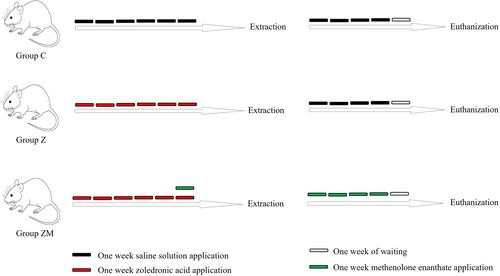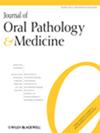Evaluation of Methenolone Enanthate Efficacy in Preventing MRONJ: A Randomized Trial on Rats
Abstract
Background
It is well-known that oral surgical procedures pose a high risk for medication-related osteonecrosis of the jaw in patients taking bisphosphonates. Although some position papers and guidelines have been published with regard to its treatment, few studies have investigated prevention methods. This study investigates the effectiveness of methenolone enanthate, an anabolic steroid, for the prevention of medication-related osteonecrosis of the jaw.
Methods
Thirty-six Wistar rats were divided into three groups. Two experimental groups, Z and ZM, took zoledronic acid for 6 weeks prior to extraction of the left maxillary first molar. The Group ZM also was given methenolone enanthate continuously for 1 week before and 4 weeks after the extraction. The control group was not given any medication. The rats were euthanized 5 weeks after extraction. The extraction socket was evaluated clinically for bone exposure and histologically for inflammation, hyperemia, collagen fibers, epithelialization, number of osteoclasts, and empty lacunae.
Results
Six rats died during the experimental research. The bone exposure rate, mean numbers of attached osteoclasts (in 40× magnification), and empty lacunae (in 100× magnification) were 0%, 4%, and 0.8% in Group C; 75%, 1%, and 8% in Group Z; and 10%, 2.1%, and 3% in Group ZM, respectively. Significant differences exist between all groups regarding the number of empty lacunae. There were significant differences between Group C/ZM and Group Z in terms of bone exposure rate, inflammation, hyperemia, collagen fiber organization, and epithelialization.
Conclusion
In our tested preclinical model, methenolone enanthate has shown potential for preventing medication-related osteonecrosis of the jaw.


 求助内容:
求助内容: 应助结果提醒方式:
应助结果提醒方式:


